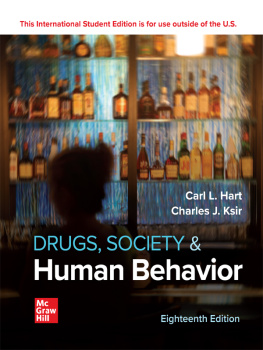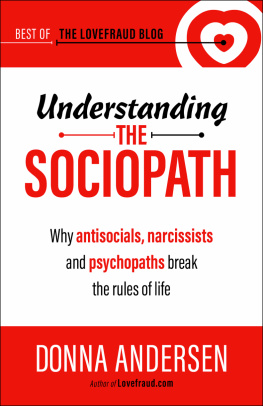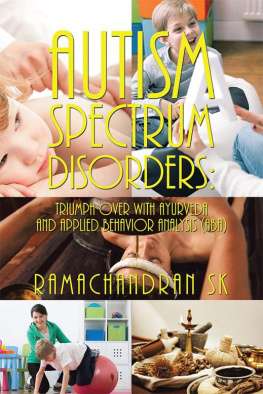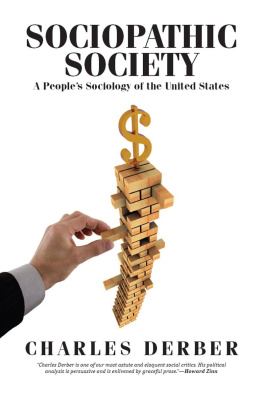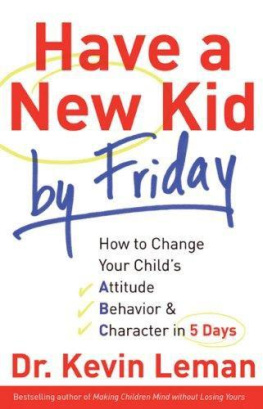BENJAMIN B. WOLMAN, PH.D.
Antisocial
Behavior
PERSONALITY
DISORDERS
FROM HOSTILITY
TO HOMICIDE

Published 1999 by Prometheus Books
Antisocial Behavior: Personality Disorders from Hostility to Homicide. Copyright 1999 by Benjamin B. Wolman. All rights reserved. No part of this publication may be reproduced, stored in a retrieval system, or transmitted in any form or by any means, digital, electronic, mechanical, photocopying, recording, or otherwise, or conveyed via the Internet or a Web site without prior written permission of the publisher, except in the case of brief quotations embodied in critical articles and reviews.
Inquiries should be addressed to
Prometheus Books
59 John Glenn Drive
Amherst, New York 14228-2197
VOICE: 716-691-0133, ext. 207
FAX: 716-564-2711
WWW.PROMETHEUSBOOKS.COM
08 07 06 05 6
The Library of Congress has cataloged the printed edition as follows:
Wolman, Benjamin B.
Antisocial behavior : personality disorders from hostility to homicide / Benjamin B. Wolman.
p. cm.
Includes bibliographical references and index.
ISBN 978-1-57392-701-7 (alk. paper)
ISBN 978-1-61592-247-5 (ebook)
1. Deviant behavior. 2. Social problems. 3. Antisocial personality disorders. 4. Agressiveness (Psychology). I. Title.
HM811.W65 1999
302.5'42dc21
9926284
Printed in the United States of America on acid-free paper
Contents
Preface
This book is an alarm signal. It was written to all people in the United States and other countries. We are concerned with the future of civilization and with the future of moral values created by religion, science, and art. We worry about the growing danger of antisocial behavior. We worry about the future of children who are exposed to violence and are growing up in a climate of excessive permissiveness and passivity.
We are calling on concerned men and women: Wake up! The spread of antisocial, sociopathic behavior is a threat to all of us!
This book has eight chapters. The suggest ways to combat sociopathy, to stop its spread, and to prevent the epidemic. Our public opinion, the mass media, and the educational system must undergo radical changes. It is our moral responsibility to defend our democratic way of life, cleanse our life of disunity, and cleanse our streets of crime.
I hope that men and women everywhere will follow my message and do the job.
Benjamin B. Wolman
1
The
Present
Situation
The Facts
We are witnessing two dangerous phenomena: On the one hand there is a growing incidence of sociopathic antisocial behavior, and on the other hand an increasing lack of concern coupled with an attitude of moral apathy. And here are the facts.
In 1963 the Federal Bureau of Investigation reported 2,180 crimes per 100,000 population. Thirty years later law-enforcement agencies reported that crime had more than doubled to 5,463 cases per 100,000 population.
On January 30, 1995, Time reported that according to a Time/CNN survey, 89 percent of those surveyed said that the crime situation in the United States is getting worse, and 55 percent were afraid that they would become victims themselves.
From 1968 to 1993 the number of arrests of juveniles rose by 68 percent.
On April 19, 1995, a terrorist bomb murdered 168 innocent men, women, and children. The bomb destroyed the Alfred R Murrah Federal Building in Oklahoma City, burying many and killing nineteen children, causing serious wounds to many adults and children.
A few days earlier G. Gordon Liddy, the Watergate conspirator who hosts the second most widely heard radio talk show, advised his listeners to shoot federal agents.
According to U.S. News & World Report: The time has focused attention on the militia or, as it is also called, patriot movement and its potential for violence. Most of those who join the paramilitary unitssome of which offer training with high-powered weaponrydo so because they expect one day to have to defend themselves against a government or United Nations onslaught envisioning a new world order. A picture on the very same page shows neo-nazis demonstrating near New Hope, Pennsylvania, wearing Confederate flags, a swastika and a modern German flag. The Center for Democratic Renewal, which monitors the militias, estimates that there are up to 100,000 members in at least thirty states, most of whom have enlisted in the past two years (emphasis added). The Christian Identity movement holds that while Europeans are Gods chosen people, Jews are children of Satan and blacks and Asians are animalistic mud.
Time reported that Timothy McVeigh, at the time the
The cases of terrorism clearly indicate the need to wake up, and the recent nerve gas attack in Tokyo and the mass murder of men, women, and children in Oklahoma are alarm signals. Due to technological advances, the terrorists may get control of atomic weapons and put an end to humankind as we know it.
According to the book Final Warning: Averting Disaster in the New Age of Terrorism, terrorist organizations are crossing historic thresholds of violence with the help of increasingly sophisticated technology: In the 1980s missiles have become more sophisticated and much more available.
Most terrorist gangs will continue to employ the usual weapons, machine guns, rockets, and bombs, etc. Some groups however, are becoming technically more adept. The consequences of miscalculating a sophisticated terrorist intention are absolutely frightening.
Imagine that a terrorist group takes over a community and believes they have the right to do as they please. Imagine a stockpile of nuclear weapons within their grasp. Are we the crazy ones, we the peaceful and law-abiding citizens, who ignore the problem and calm ourselves by ignoring the danger?
Terrorism is a grave sociopolitical and psychological problem that requires a thorough and responsible analysis. The roots of contemporary terrorism are associated with the two great terrorist systems of Hitler and Stalin, and a sober look into the dynamics of terror may be of help in the urgent task of stopping the epidemic of sociopathy. The goal of the Nazi movement was mass murder of all inferior races starting with the Jews, and world domination by the German Herrenvolk (nation of lords). Dictatorial systems believe that the end justifies the means, and they have the right to impose their will on the rest of humankind. They believe they have the right to put people in concentration camps and gas chambers or in the Gulag Archipelago. They believe they, and only they, have the right to kidnap, torture, and murder. In the name of what they believe in, they have the right to do as they please.
This philosophy has been practiced by Idi Amin, Ayatollah Khomeini, Jim Jones, and Muammar Qaddafi, among others. This is the raison detre of the Red Brigades, Baader-Meinhof gang, the Palestine Liberation Organization (PLO), Irish Republican Army (IRA), Basque Fatherland and Liberty (ETA), and the United States paramilitary anti-American groups.
Undoubtedly, dictatorial ideas and their terrorist offshoots attract some people for the following reasons: (1) They set a goal, a purpose, a task to be fulfilled. They offer their followers a meaning to their lives and thus counteract the existential nihilism of our times. (2) They give their members a feeling of superiority (Raskolnikovs elitism) and enable them to look down on the rest of humanity, believing that only they have the wisdom and the courage to act in a bold and reckless way while serving some allegedly sublime goal. (3) Acting in a group and following an inspiring leader or an idea obliterates the normal feelings of fear and guilt and thus (4) enables otherwise normal individuals to practice self-righteous violence. And last, but perhaps the most important reason, (5) their actions are usually successful.
Next page

